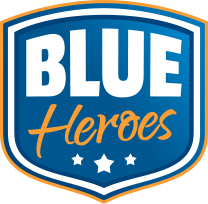15 June 2022
Written by Exercise Physiologist, Jena Buchan in collaboration with Exercise & Sports Science Australia (ESSA).
Ah the gym. Too often, people may feel if they don’t attend one, they can’t or aren’t properly doing exercise. However, you’d be amazed at just how many fun ways there are to exercise from the comfort of your own home, yard and/or local park! Here’s where it can get overwhelming though, and maybe even a bit fear-provoking. First, where to start?? What is key is to find things you enjoy, not things that you dread and are just doing because you are ‘supposed to’. That isn’t going to turn into a long-term exercise behaviour. Second, how do I do it safely?? Often a comforting thing about the gym is that, should anything happen, someone is likely there to help. However, there are ways to maximise safety of exercise away from a gym.
While ideally, I’d recommend getting some guidance to start, from someone like an Accredited Exercise Physiologist with training in oncology, your body and some simple self-tracking tools can also help. Also, recognising that you are likely to have ‘good’ and ‘not so good’ days, so being kind to yourself and having options for both kinds of states. While some is better than nothing, there is also a thing as too much or too intense. You can use things like your breathing rate, heart rate and just overall sense of how you’re feeling to start gauging that.
Here’s some tips and ideas to get you started:
1) Consider your environment. Certain rooms in the house more slip-proof due to flooring, and therefore a bit safer? Can you keep your phone close? If you’re doing things outside, is it somewhere people are likely to pass by, or hear if you yell? Stairs can be a really great exercise ‘equipment’ piece, but rather than going all the way to the top and back down, do laps of the first four or five only. Have pets, kids/grandkids or lots of objects low to the ground? Be aware of any trip hazards before getting started (particularly if you’re adding in some jumping or quicker activities) and do what you can to minimise them.
2) Tracking ‘calendar’. To get started with this, you can use a traditional diary or even white board with 7 columns (1/day of the week). If you work best with a plan, write in your weekly intended exercise activity, including when, where, what and how long. More a ‘see what the day brings’? Complete that part of the column at the end of every day in relation to what you did exercise-wise. Ideally earlier in the day, enter an overall energy level from say 1-10 (10=top level), a description of how you’re feeling (mood, motivation, etc), how you slept the night before (again, 1-10, 10=excellent) and any other variables you want to include. Note any trends, but also be okay with just a simple, slow walk if your day brings super low energy, limited motivation and poor sleep.
3) Create an ‘exercise space’. One of the most effective ways to make exercise simple AND easy is to create an environment that encourages it. For example, do you have a little set of weights you can leave on the countertop or coffee table, so every time you walk by its easy to do a few bicep curls, shoulder presses or similar? Can you start doing calf raises while you brush your teeth or wait for the kettle to boil, even if it’s just 3 or 4 to start? Soon you’ll be doing them without even thinking! Also, if you like watching TV, could you put a small treadmill or bike in the same room, and jump on that for even a few minutes when you turn on the TV? The options are endless.
You can find an Accredited Exercise Physiologist by visiting www.essa.org.au/find-aep and select ‘cancer’ as the speciality.
Alternatively, give PCFA’s Prostate Cancer Specialist Telenursing team a call on 1800 22 00 99 to talk about how you may be eligible for a subsidy to help reduce the costs associated with seeing an Exercise Physiologist.

